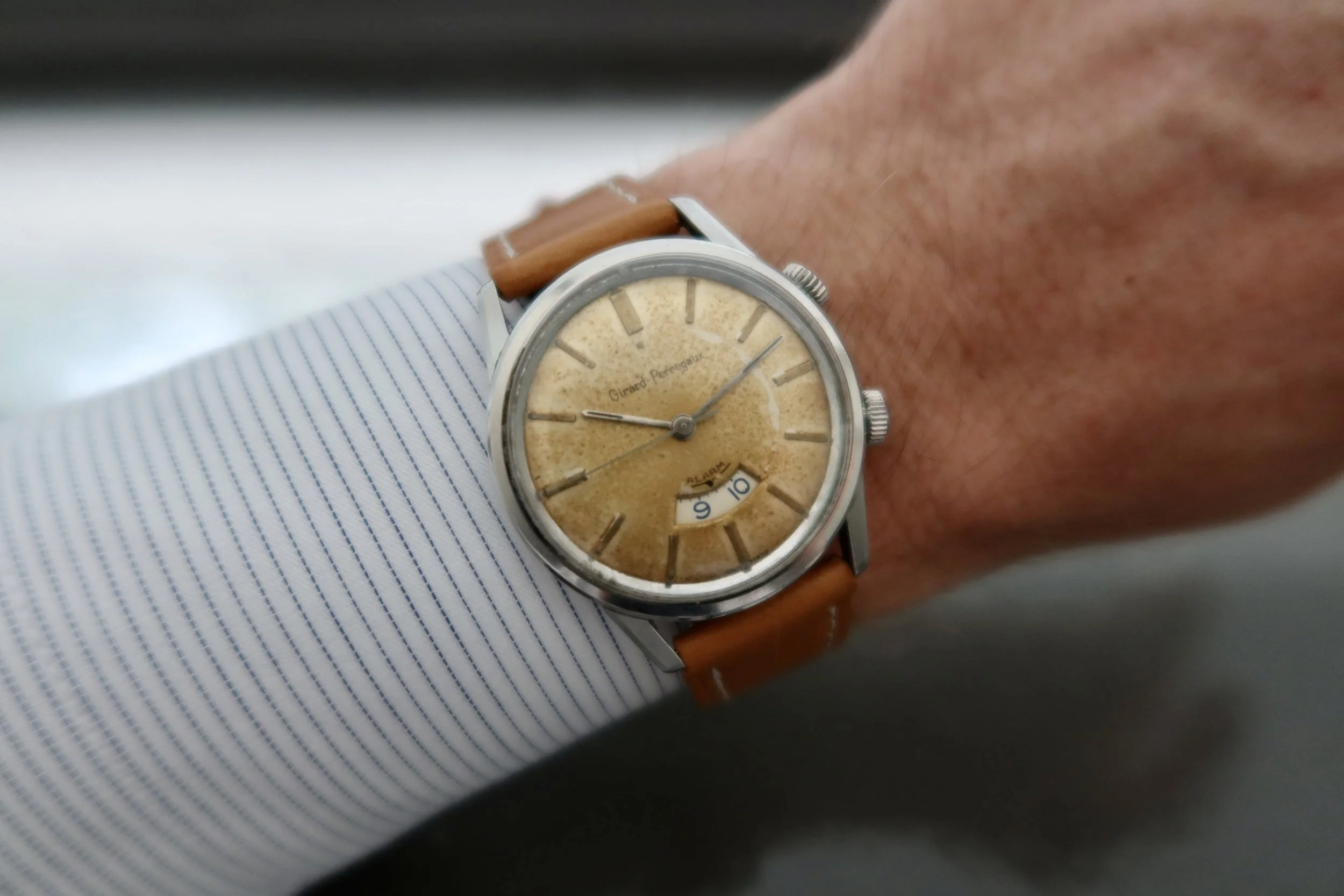Simple and So Effective, The 1960's Girard Perregaux Sea Hawk reference 7901
There are collecting arcs - a process in which collectors learn, yearn, and enjoy different types of watches. Part of this arc is complications - watches with many different functions. This type of watch is sometimes designed in such a complex way that their dials can feel overwhelming. All the hands and sub-dials, it can sometimes feel like telling the time is a chore.
Simplistic watches have their perks. Sure, it is not as complicated as other watches, but sometimes one needs to take a step back and breath easily while telling the time. This Girard Perregaux Sea Hawk is an incredible example of an easy-living watch.
Interestingly, this is not the first reference 7901 we have seen at Life on the Wrist. We actually covered one back in 2019. The watch was essentially identical to the Sea Hawk we have today, with one slight difference - the dial. The 2019 version had an extremely clean and crisp white dial while today’s version has aged just enough to show the warmth of the many years that have past since the 60’s when it was manufactured.
But before we jump into the watch, let’s go through the history of the Sea Hawk. The Sea Hawk was originally launched in the 1940’s. Given it’s name, it was describing the fact that the line of watches would have some sort of water resistance. The Sea Hawks of this era were military style watches that had manual wind movements. Going into the 1950’s, Girard Perregaux began experimenting with other designs for the line of watches. They wouldn’t be described as dress watches, but straddled between dress and military.
The 1960’s is when the brand really changed the overall feel of the Sea Hawk. Instead of using military styling for their pieces, the Sea Hawk became more of a dress watch - mainly steel pieces with some gold plated watches. The watches were typically time-only in complication and used manual wind movements. The watches also increased in size to the 34mm mark.
The reference 7901 is a good example of what the 60’s had in store for the Sea Hawk. This reference came in many dial variations, some with applied number hour markers, others with stick hour markers. You can see two dial variations in the two advertisements below. Shoutout to Blomman@PuristPro for the finds.
This version of the 7901 has a stainless steel case is in good overall condition. The case shows signs of age, with some scratches throughout. The bottom right lug has a larger scratch on it. The watch features rectangular lugs that are long and extend flatly from the case. The watch sits very comfortably on the wrist. The crown is unsigned, but the kicker really is the dial.
The white dial has a beautiful light hue of patina with large applied hour markers. The hour markers really are large, and very legible. Thankfully, the dial is so uncluttered it makes the watch extremely legible, and the empty space allows for the patina to shine through as a very important characteristic of the watch. The concentric circle pattern of the subsidiary seconds dial is also really attractive to look at and almost replaces the complications one sees on other watches and would typically be mesmerized by.
As far as markings go on the case of this watch, the reference and serial for this piece can be found between the lugs at 6 o’clock. The outside of the caseback has ‘stainless steel’ written on it, indicating the case metal used for the watch. The inside of the caseback has the Girard Perregaux stamp, as well as ‘stainless steel’ written on it. During this era, Swiss watch companies typically imported movements from Switzerland to the USA market separately from their cases because they would avoid paying higher import taxes and duties. This watches movement has the import code GXM, which was the import code used by Girard Perregaux to import their movements. There are no markings on the case to indicate that the watches case was manufactured in the USA. One could assume either the manufactured did not stamp it, or that the case was manufactured in Switzerland along with the movement.
The watch runs of the caliber GP 12.4 manual wind movement. The movement is a 13 lignes, manual wind movement with 42 hours of power reserve. The movement is based on the AS 1640 movement and very few modifications were made by Girard Perregaux. There were many variations of this caliber, and the 12.3 caliber is more common. It uses an Incabloc anti-shock device whereas the 12.4 uses a Kif Ultraflex anti-shock device. The incabloc system are more common, but neither really is supreme than the other. If you look at the jewel on the balance wheel, you will see the top of the gold-tone spring that provides shock absorption.
While the movement is not finished to the standards of something like a Patek Philippe movement, the industrial finishing is quite attractive to look at. It almost reminds one of the three-quarter plates seen on A Lange & Söhne movements.
So, simplistic in design, but as one can tell, so enjoyable to look at. Time-only pieces are important for a collection. If executed well by a watchmaker, like this Girard Perregaux reference 7901, It reminds a collector of the fact that proportions, dial layout, finishing, legibility, and age are all important factors with vintage watches.
Enjoy!











